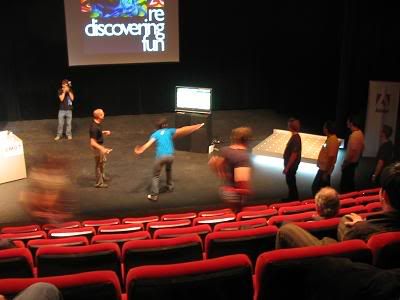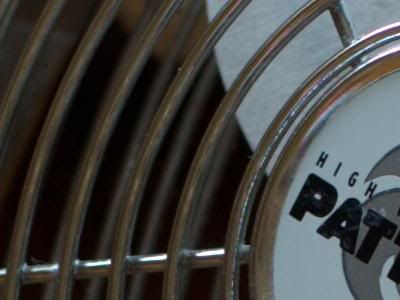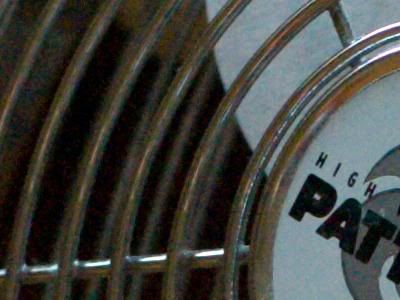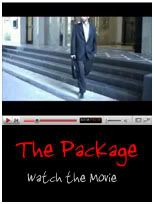Part 2
In the previous part, we mentioned the different functions you could use to adjust your photo settings. We'll go in more detail over these settings and how they can modify your shots, but first lets discuss the flash function:

The function wheel might look the same, or different depending which camera you have (some might not have different functions to choose from, and might give you the ability to adjust all settings manually). Usually the Auto function (green rectangle here) gives you very limited control over the settings; it might allow you to switch the flash off and on, and possibly switch to macro shots for close up objects (but some camera models don't even allow that). The P function, however, give you more control so try using that for the following examples.
Flash:
You have the ability to turn this ON or OFF, or use AUTO (which determines the amount of available light and uses the flash if required). Some camera models might also have a soft flash function, which is less intense than the regular flash.
Most people assume that whenever you have a dark scene, you should use the flash, and that is not always correct (unfortunately, most cameras automatically switch the flash on in dark situations regardless of the scene). First, the flash can only light up close subjects, and when you do use flash the camera usually uses a shorter shutter speed, so anything dark in the distance stays dark:

The flash projects a short-range stream of light, and the closer an object is, the more lit up it would be. If you have a number of objects varying in distance from the camera, you would notice them getting darker the further they are, such as the chairs in the above picture (closer ones are bright, further away ones are less distinct, while the stage is completely dark).
The flash has a limited ability to take shots of objects a few meters away in dark conditions. Anything further would end up faded out because 1- the flash light does not project far enough and 2- the shutter speed is pretty quick when the flash is on, making far away dark objects difficult to see (the TV screen in the above shot shows because it emits it's own light. Everything else on stage is unclear).
The shutter speed is usually fast when the flash is on, because the camera senses a large amount of light. Of course, with a fast shutter speed, only the very close, or very bright objects would appear in the shot. When taking the exact same shot without a flash, the shutter speed slows down automatically (the camera senses less light and needs more time to take in whatever light is available) and therefore gives a more well-rounded shot. In this shot, you can see both the close and far away subjects more clearly:

The colors look more natural, and most objects in the distance are also clear. You do find problems in very dark conditions without a flash, however, because the camera might use a slow shutter speed that needs you to keep the camera very still, otherwise the whole image would come out blurry. In this case, either use a tripod, or try to place the camera on a stable object (table, etc). Unfortunately, even if the camera is still, any moving objects look blurred (such as the people moving around in the above photo).
What can be done about this? Cutting down the shutter speed will give you a darker image, but you have a good friend on your camera, called ISO, which helps in this sort of situation.
ISO:
ISO is an adjustable setting that allows your film to become more sensitive to light. What does this mean? It basically means that with a higher ISO setting, your photo will appear brighter, as the camera becomes more sensitive to each ray of light entering the lens (therefore requiring less time to take a photo, which is useful in dark shots).
ISO is measured in stops, each double the previous one; ISO100 is usually the base setting on most cameras, with ISO200 next, then ISO400, and so on. In theory, going up one ISO step means that your exposure time is cut in half (ie, if a photo required 1 second to shoot at ISO100, it would need half a second to shoot at ISO200, or a quarter of a second using 400). Not all cameras have the same ISO functions; some budget models only go upto ISO200, while your average DSLR will go up to around 1600 (and some even higher than that).
The drawback of using higher ISO settings is the amount of noise generated in the photo. Overall this may or may not always be very clear, but again, it depends which camera model you use, and whether you view the photo at full size or zoomed out - here's an example:

This is a photograph taken at both ISO 100 and 1600, and in both shots the image looks similar. However, when you zoom in at full size, the noise becomes apparent; the first shot is at ISO100, and the second is at 1600:


Try out your camera to see how much the ISO setting affects your photos; the difference usually shows more clearly in darker shots, and the amount of noise varies with the model of camera you use. Next time, we'll discuss the other functions that you can change to affect your shots.




9 comments:
And yet your new website look is uglier, and takes longer to download, sporadically failing to download at all... Ha ha.
useful information
good post
thank you
Off Topic:
I just read in your profile that you like reggaeton.
Go to hell.
^ Lol.
I never know how much my ISO should be. :-S The quality of the photo is better the lower it is, but at the same time, my hands shake a lot, so it just comes out as a blurry mess when I use a low ISO. -_-
I have a tripod, but seriously, who lugs one of those around with them everywhere! :p
shale; use a modern browser and OS, will ya? honestly though, im not too happy with the look... i feel its a bit fussy, but i really cant be bothered to do up the whole thing again... bluh...
manalq8; glad you enjoyed it
woozie; dude, did you see how the girls shake they bootay when they listenin to it? how can you NOT like it?
taqo; practice in different lighting situations. the darker the shot youre trying to get, the higher you should set your ISO. in daylight or bright areas, keep ISO on the lowest setting.
Modern browser and OS? I am pretty sure gutsy gibbon ubuntu linux version is a lot newer than windows, and firefox is updated regularly.
I got a camera with very good iso, specifically so I could take photos indoors at a wedding without interrupting with the flash. It really wasn't necessary in the end, because the place was strobed.
ok, modern wasnt the right word. "Not crap" was.
do not burn the heathen, for he knows not what he speaks...
u try running lots of clustered computing programs and we will see how long before you shift to linux!!
or maybe i wont, and ill stick to my winXp thank you.
Post a Comment